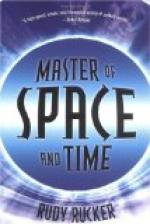The methods used in achieving the wireless telephone were widely different from those which brought forth the telegraph and the telephone. Times had changed. Men had found that it was more effective to work together through organizations than to struggle along as individuals. The very physical scope of the undertakings made the old methods impracticable. One cannot perfect a transcontinental telephone line nor a transatlantic wireless telephone in a garret. And with a powerful organization behind them it was not necessary for Carty and his associates to starve and skimp through interminable years, handicapped by the inadequate equipment, while they slowly achieved results. This great organization, working with modern methods, produced the most wonderful results with startling rapidity.
Important work had already been done by Marconi, Fessenden, De Forest, and others. But their results were still incomplete; they could not talk for any considerable distance. Carty organized his staff with care, Bancroft Gerhardi, Doctor Jewett, H.D. Arnold, and Colpitts being prominent among the group of brilliant American scientists who joined with Carty in his great undertaking. While much had been accomplished, much still remained to be done, and the various contributions had to be co-ordinated into a unified, workable whole. In large part it was Carty’s task to direct the work of this staff and to see that all moved smoothly and in the right direction. Just as the telephone was more complex than the telegraph, and the wireless telegraph than the telephone, so the apparatus used in wireless telephony is even more complex and technical. Working with the intricate mechanisms and delicate apparatus, one part after another was improved and adapted to the task at hand.
To the devices of Carty and his associates was added the extremely delicate detector that was needed. This was the invention of Dr. Lee de Forest, an American inventor and a graduate of the Sheffield Technical School of Yale University. De Forest’s contribution was a lamp instrument, a three-step audion amplifier. This is to the wireless telephone what the coherer is to the wireless telegraph. It is so delicate that the faintest currents coming through the ether will stimulate it and serve to set in motion local sources of electrical energy so that the waves received are magnified to a point where they will produce sound.
By the spring of 1915, but a few months after the transcontinental telephone line had been put in operation, Carty had his wireless telephone apparatus ready for extended tests. A small experimental tower was set up at Montauk Point, Long Island, and another was borrowed at Wilmington, Delaware. The tests were successful, and the experimenters found that they could talk freely with each other. Soon they talked over a thousand miles, from the tower at Montauk Point to another at St. Simon’s Island, Georgia. This in itself was a great achievement, but the world was not told of it. “Do it first and then talk about it” is the maxim with Theodore Vail and his telephone men. This was but a beginning, and Carty had far more wonderful things in mind.




